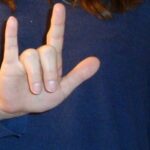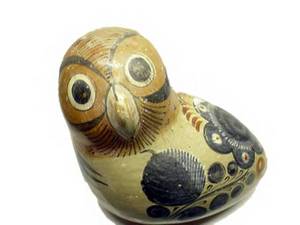There are many traditions in sports-an umpire’s hand signals and the seventh inning stretch in baseball, the coin toss before the start of a football game, and the tip off in basketball. There is no doubt a story behind each tradition. A careful examination of history shows that the hand signals in baseball were inspired by the first deaf superstar of major league baseball-William Ellsworth “Dummy” Hoy, who was born during the Civil War in 1862, in tiny Houcktown, Ohio-even though in the National Baseball Hall of Fame an umpire is credited with being the first to use the signals.
In the Hall of Fame, Umpire Bill Klem is credited with creating hand signals in 1905. Newspaper clippings dating back to 1888 refer to Hoy and the use of hand signals, however.
During an 18-year major league career Hoy played for the Washington Senators, twice for the Cincinnati Reds, the Buffalo Brotherhood, St. Louis Browns, the Louisville Colonels, and Chicago White Sox. He played in 1,764 games. There is some disagreement in historical records as to Hoy’s exact statistics, but his career average could have been as high as .291, and he hit over .300 three times. Hoy had 2,054 hits, 1,004 walks, 605 stolen bases, and 318 assists for his career.
On June 19, 1889 Hoy, when playing for the Senators, threw three Indianapolis outfielders out at home plate, becoming one of only three outfielders in major league history to accomplish the task. Hoy, in his rookie season, led the National League in stolen bases with 82. He played two seasons for the St. Louis Browns of the American Association, a short-lived league. His first season he had 119 walks, to lead the league, and scored 136 runs for the team, to lead the Browns.
He played his first of two seasons for the Louisville Colonels, in 1898. The team only existed for two years. He had his best major league average of .318 in 1898 and batted .306 in 1899.
Hoy was the first player in American league history to hit a grand slam, while playing for the Chicago White Sox on May 1, 1901. Hoy hit .294 for the season and helped the team win an American League pennant, the first for the White Sox. Hoy also had 45 fielding assists, a record for any league. During 137 games, he also had 337 putouts and a .977 fielding average. That was the only time in major league history an outfielder has ever led in assists, putouts, and fielding percentage.
In 1902, when back with the Reds, Hoy batted against pitcher Luther Haden “Dummy” Taylor of the New York Giants, on May 16, 1902, during his last major league season. That was the only time in major league history that two deaf players have ever faced each other. The Giants won 5-3.
To end his career, Hoy plated for Los Angeles of the Pacific Coast Winter League, after being released by the Reds in August of 1902. He played 211 games and stole 43 bases. He caught a fly ball in the fog to clinch the pennant for Los Angeles, in his last play.
The hand signals began when Hoy played for Oshkosh, Wisconsin. Umpires had been shouting the calls for balls and strikes, and Hoy had to ask his third base coach whether a ball or strike had been called. Opposing pitchers had been taking advantage of Hoy’s not being able to hear by pitching quickly to him. As a result, Hoy only batted .218 during his first season. Umpires and players found the signals useful, and they became commonplace. Hoy also used signals for out and safe.
Hoy had graduated from Ohio School for the Deaf before beginning starting to play baseball.
Hoy was known for his honesty, and fans and his teammates loved him. Although many other players in his day were rowdy, he was never thrown out of a game for disorderly conduct. As for his honesty, an umpire once called an opposing player out, giving Hoy credit for catching a ball on the fly. There was a disagreement among players and the umpire, before the umpire asked Hoy if he had caught the ball. He said he had caught the ball after it bounced, and the player was called safe. He taught his teammates sign language. Fans would often cheer the deaf man by wildly waving their arms and hats.
Hoy was inducted into the Ohio Baseball Hall of Fame. He also became the first inductee in the American Athletic Association of the Deaf Hall of Fame. The cities of Buffalo, Cincinnati, Columbus, Louisville, and Oshkosh held “Dummy Hoy,” days on May 23, 1995. The mayors of each city had proclaimed the day.
Hoy has been proposed several times for induction in the National Baseball Hall of Fame. Several former players, in the Hall of Fame themselves, who played with Hoy, including Honus Wagner, Connie Mack, and Clark Griffith – all said he deserves induction. In fact, Ty Cobb did not steal as many bases in his rookie season as Hoy did in his, 82, and Babe Ruth stole less than 10 in his rookie season.
After retiring from baseball, Hoy was a farmer and later a personnel director for several hundred deaf workers at Goodyear. He coached the Goodyear Silents baseball team from 1919-1920. On October 7, 1961, Hoy threw out the first pitch for the World Series. He died just short of 100 on December 5 of the same year.


